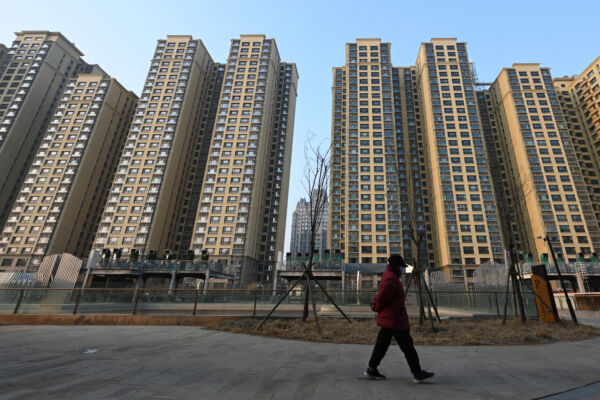On Tuesday, September 24, the People’s Bank of China announced the largest stimulus measures for the domestic economy and stock market since the outbreak of the pandemic, aiming to lift the downward Chinese economy out of deflationary pressures. However, experts warn that without reflection by the authorities, the economic slump may be difficult to alleviate.
The extensive stimulus package includes lowering the benchmark interest rates, reducing the reserve requirement ratio for banks by 50 basis points to release around 1 trillion yuan (about $142 billion) in new loans; reducing existing housing loan rates and lowering the minimum down payment for second homes.
Facing falling prices, worsening real estate crises, and escalating trade tensions internationally, amidst internal and external challenges, the “market-rescue” measures highlight the anxiety and unease of the Chinese authorities.
The central bank stated that depending on the market’s liquidity conditions later this year, the reserve requirement ratio may be further reduced by 0.25 to 0.5 percentage points.
Additionally, to boost the sluggish Chinese stock market, the central bank will provide 500 billion yuan (about $70 billion) in loans to funds, brokers, and insurance companies for purchasing Chinese stocks; introducing a special re-lending facility for stock repurchase with an initial quota of 300 billion yuan (about $43 billion) to support listed companies in repurchasing stocks.
Regarding China’s “weighty” market rescue, analysts question the effectiveness of the central bank’s liquidity injections as the credit demands of businesses and consumers are very weak, and there is a lack of policies supporting actual economic activities.
The real estate market remains the biggest challenge for the Chinese economy. Many economists argue that the government should not prop up the already weak housing demand by cutting interest rates.
Scholars from the Washington Institute for Strategic Studies analyzed China’s latest market-rescue plan, expressing concerns that rate cuts and reduced down payments may not solve the housing crisis fundamentally. The distortion in real estate prices over three decades has led to an excess supply of housing that is unaffordable for many Chinese.
Economist David Huang, based in the U.S., noted that while the recent regulatory measures may have some effects in the short to medium term, they cannot fully rescue the economy. To achieve a true recovery, a comprehensive approach starting from the fundamental aspects of China’s economy is necessary.
Huang emphasized the significant pressure of the current economic downturn, pointing out the entrenched issues of declining consumer spending, unemployment, and local fiscal disruptions. He highlighted that the timing of the market rescue measures seems belated in addressing these challenges.
In the first half of this year, several regions in China intensified efforts to collect taxes and launched special actions for handling non-performing assets.
Analysts have indicated that the central bank’s trillion-yuan liquidity injection might be insufficient. Huang mentioned that the government’s spending on superficial projects may surpass that on market rescues, exacerbating the situation. Furthermore, with three years of combined effects from the pandemic and the U.S.-China trade war, time is running out for effective measures.
Furthermore, as China’s population continues to decrease, exacerbating demographic challenges, particularly for the property market, there are concerns about further price declines without signs of stability.
The reduced loan interest rates are putting pressure on Chinese banks’ interest margins. The current interest margin on deposit loans in China has decreased to 1.54%, well below the international breakeven point of 1.8%. This signifies potential losses for banks, leading them to be cautious in extending loans, further undermining support for the real estate market.
Over the past 30 years, Chinese banks have accumulated significant bad debts, particularly from real estate development. During a prosperous market, risks diminish, but the current economic climate presents a stark contrast, with mounting bad debts.
The recent reduction in down payment requirements from 20% to 15% by the central bank means that homebuyers need to finance 85% of the purchase price through loans, increasing the risks of unfinished property projects. The combination of these factors could trigger a financial collapse in the Chinese banking system in the short term.
The current policy measures are akin to a temporary remedy that fails to stimulate housing demand, potentially leading to an increase in bad housing loans and, ultimately, jeopardizing the entire banking sector, creating a dangerous cycle.
Foreign investors have realized that China lacks the rule of law and a market economy, prompting many to withdraw investments from China, including numerous Chinese companies relocating overseas.
China expert Wang He analyzed that the authorities’ inability to address the root causes of China’s economic woes due to internal disagreements and weak decision-making is exacerbating the situation. The current policies are viewed as futile and lack effectiveness, leading to a dire state within the Chinese political landscape.
It is evident that the policies are ineffective and trapped in a cycle, posing serious challenges to China’s economic revival and necessary reforms.
Efforts need to be undertaken to address the flaws in existing policies and decision-making processes to lay a foundation for sustainable economic recovery.

